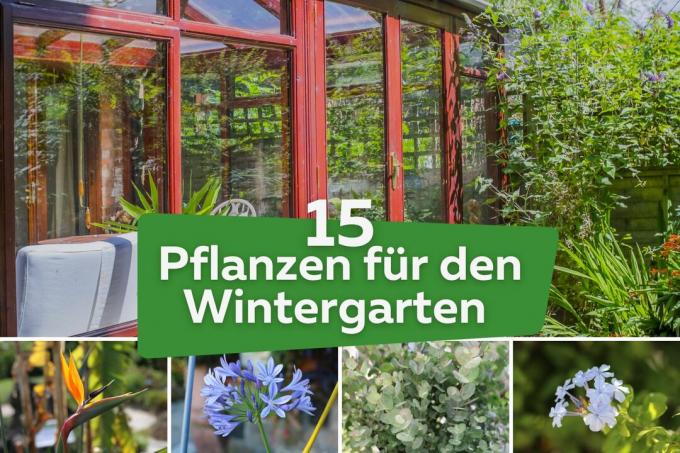
There are many plants for which the conservatory is an ideal place to overwinter. In the case of permanent planting, however, factors such as light, humidity and the heat requirements of plants must be taken into account.
In a nutshell
- cold conservatories are unheated
- Fig or olive tree are ideal for cold conservatories
- warm conservatories have a minimum temperature of 18°C
- Agaves or palm lilies feel very comfortable in warm conservatories
- Temperate conservatories have a temperature of at least 5°C, which is ideal for ylang-ylang or eucalyptus
Table of contents
- Cold conservatories
- Cowardly
- hemp palm
- camellia
- olive tree
- star jasmine
- Warm conservatories
- agaves
- strawberry tree
- yucca
- African Lily
- citrus plants
- Temperate conservatories
- Tree Strelitzia
- eucalyptus
- Cape Leadwort
- night jasmine
- Ylang Ylang
- frequently asked Questions
Cold conservatories
The cold conservatory is not heated. It is very bright, but the temperature can drop as low as -5 °C. During long periods of cold, even lower temperatures are possible, which you should take into account when planting. In summer it can be around 50 °C in the conservatory.
Cowardly
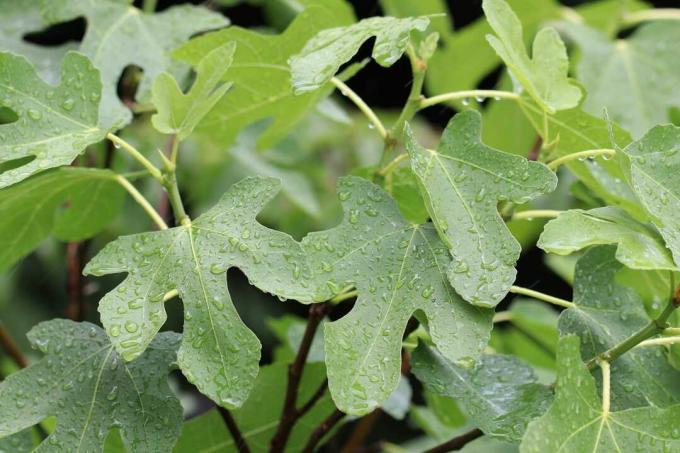
The fig (Ficus carica) is ideal for the conservatory, as the fruit ripens safely there. It could also be planted outdoors, although an early onset of winter can reduce yields.
- growth habit: shrubby, small tree
- Height: 300 – 400 cm
- growth rate: 20 – 40 cm per year
- Sheet: deeply dissected, yellow autumn colour, deciduous
- blossom: inconspicuous
- substrate: slightly acidic, loamy, nutritious, well-drained
Notice: Varieties available in Central Europe are usually self-fertile. The insect needed for pollination would not survive the winter.
hemp palm
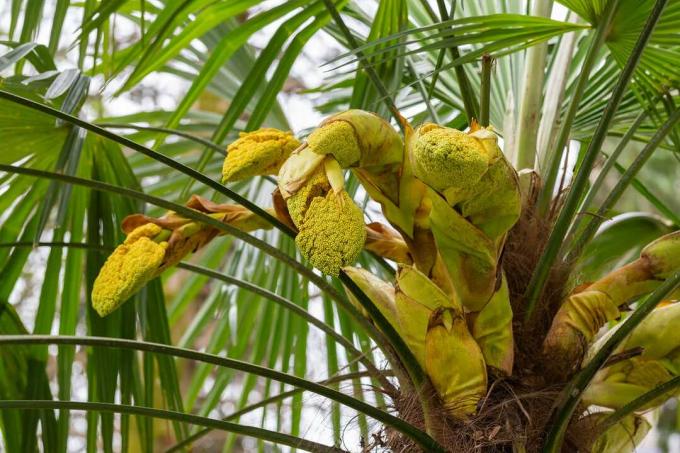
The hemp palm (Trachycarpus fortunei) is a popular houseplant that is very robust. In the cold conservatory there are optimal conditions for it, because it needs a sunny but sheltered location.
- growth habit: single trunk
- Height: 200-400cm
- growth rate: 5 -15 cm per year
- Sheet: fan-like, evergreen
- blossom: green-yellow, like panicles
- substrate: fresh to moist, loamy, nutritious
camellia
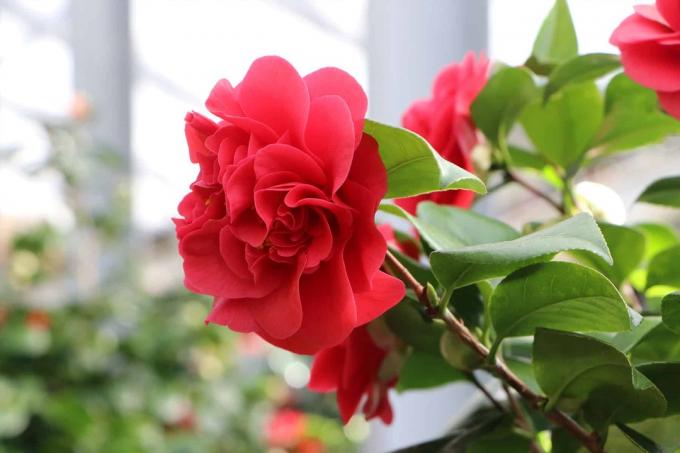
Camellias (Camellia japonica) impress with impressive flowers. They are ideal for one cold conservatory, because if the temperatures are too high, the closed flowers fall off.
- growth habit: upright, compact, small shrub
- Height: 150-200cm
- growth rate: 5 – 30 cm per year
- Sheet: elongated, glossy, dark green, evergreen
- blossom: filled, white to red
- substrate: fresh to slightly moist, well-drained, humic, slightly acidic
Tip: The camellia genus includes the tea plant (Camellia sinensis), which is also suitable for the conservatory. It has a rather inconspicuous but intensely fragrant flower.
olive tree
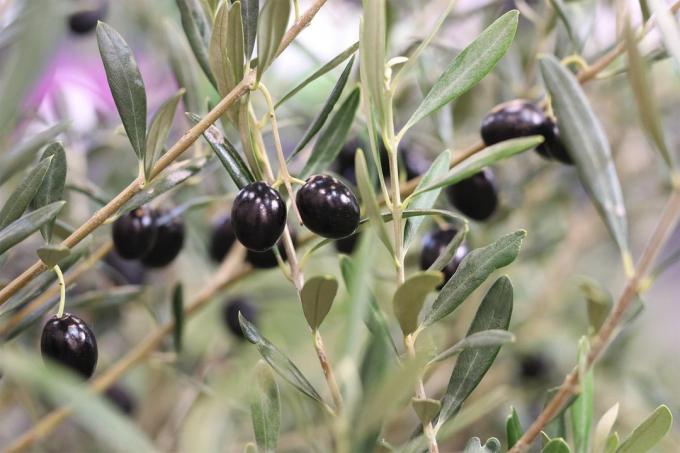
The Olive (Olea europaea) also tolerates slightly below zero temperatures. A second tree is required for fruiting in the conservatory and air movement during flowering to encourage pollen dispersal.
- growth habit: small tree
- Height: 300 – 400 cm
- growth rate: 5 – 20 cm per year
- Sheet: long, narrow, smooth, dark green above, silvery below
- blossom: small panicles, white with prominent yellow stamens
- substrate: well-drained, loamy, moderately nutritious
star jasmine
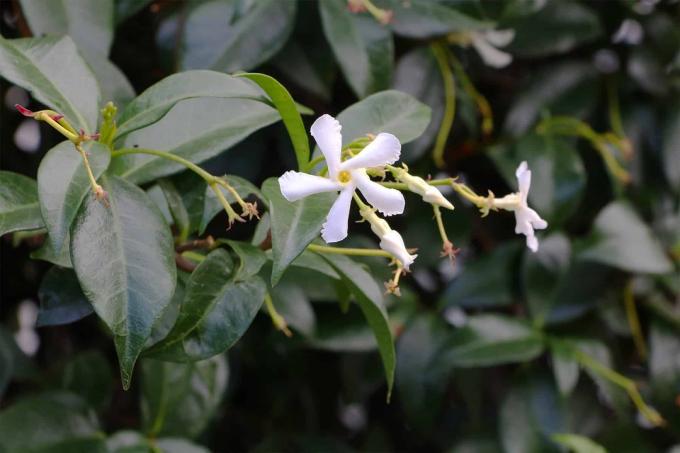
The star jasmine (Trachelospermum jasminoides) is an undemanding plant in the conservatory. But he needs a climbing aid so that he can develop well.
- growth habit: climbing, strongly branched
- Height: 150 – 300 cm
- growth rate: 20 – 50 cm per year
- Sheet: oval, dark green, evergreen
- blossom: small light yellow single flowers
- substrate: fresh, well-drained, medium nutritional requirements
Warm conservatories
The warm winter garden is heated, which means that the temperature does not fall below 18 °C all year round. Warm conservatories usually have special glazing that reduces solar radiation, or have a shade, which means that temperatures usually do not rise above 30 °C.
agaves
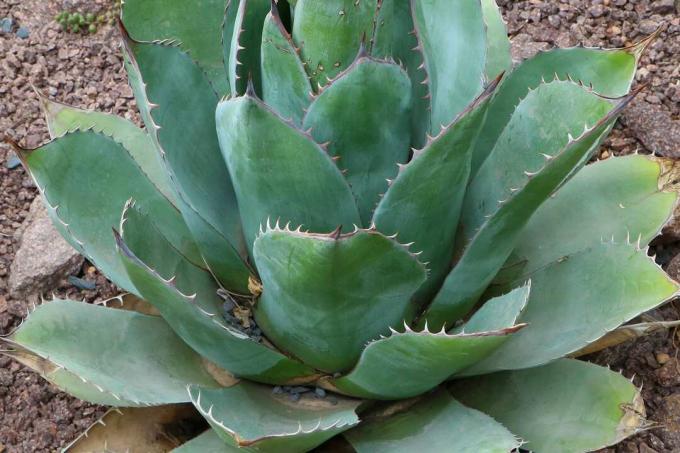
Fans of true exotics will be overwhelmed by the variety of agaves (agave). One of the best known Agave Species is the sisal agave (Agave sisalana), which is used to obtain fibers.
- growth habit: erect, bushy
- Height: 50-200cm
- growth rate: 5 – 10 cm per year
- Sheet: elongated, tapering, variable coloring
- blossom: in panicles, often yellowish to orange
- substrate: mineral, well-drained, moderately nutritious
Notice: Occasionally sold the real one Aloe (aloe vera) also counted among agaves, but it belongs to a different plant family. The aloe and its relatives are suitable for a warm winter garden with low humidity.
strawberry tree
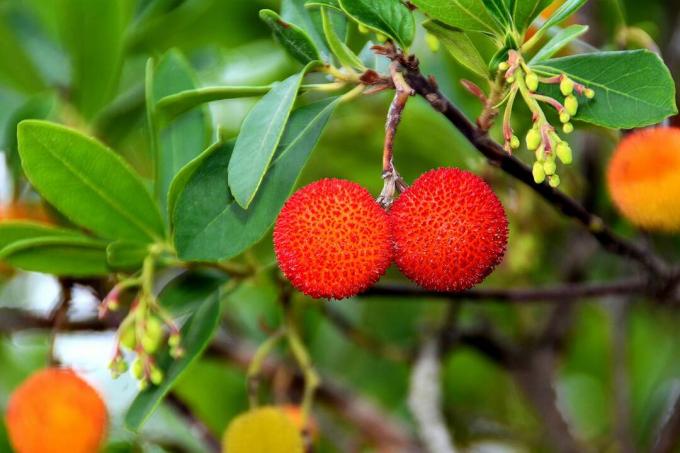
A special feature of the strawberry tree (Arbutus unedo) is that the tree flowers at the same time as fruiting. The strawberry tree gets its name from the fruit it produces strawberries look similar but are not edible.
- growth habit: small shrub, many branches, bushy
- Height: 200 – 500 cm
- growth rate: 10 – 30 cm per year
- Sheet: elliptical, serrate, dark green, evergreen
- blossom: simple, bell-shaped, white
- substrate: dry to maximally fresh, well-drained, no chalk, moderately nutritious
yucca
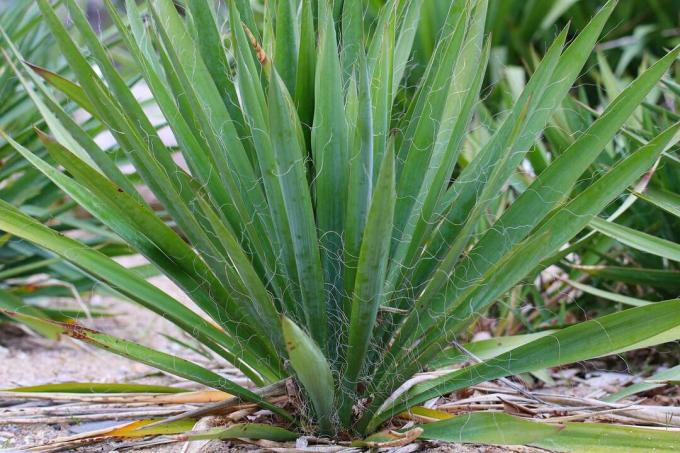
Although the yucca (Yucca filamentosa) is frost hardy, a wet winter causes problems for the plants and they can even rot. In the winter garden, they can develop into impressive perennials that impress with their lush flowering.
- growth habit: erect inflorescences, arching, forms clumps and stolons
- Height: 60-120cm
- growth rate: Inflorescences sprout annually
- Sheet: elongate, tapering, leaf margins hairy
- blossom: paniculate inflorescence, white bell-shaped single flowers
- substrate: dry, very well drained, tolerates lime, sandy to rocky
African Lily
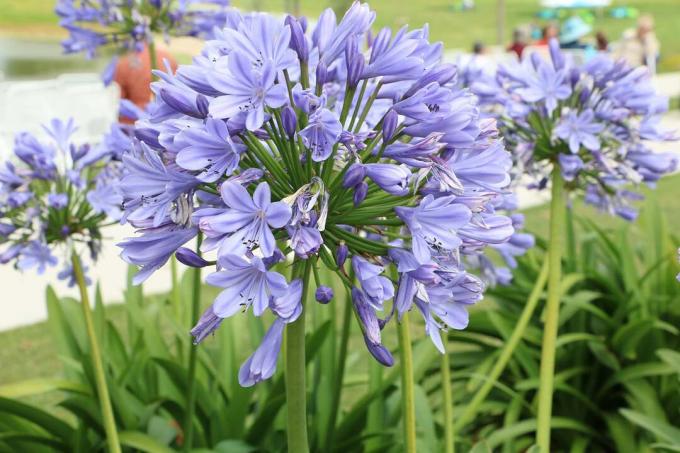
The African lily (Agapanthus africanus) is an ideal container plant, but likes it warm all year round. Its flower umbels, which can have a diameter of more than 10 cm, are an eye-catcher in the conservatory.
- growth habit: erect, slightly overhanging, clump-like
- Height: 60-65cm
- growth rate: sprouts anew every year
- Sheet: elongate, narrow, rounded at the tip, light green, deciduous
- blossom: umbel-like, white or blue
- substrate: fresh, well-drained, nutritious, loamy to sandy, humic
citrus plants
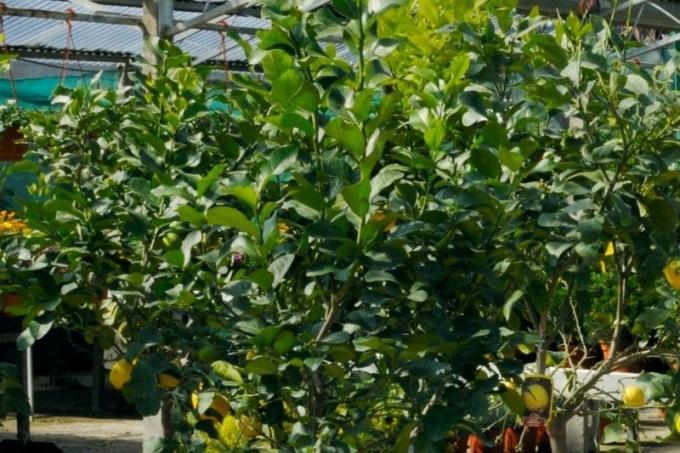
Citrus plants (citrus) like it cool, but do not tolerate frost. In the warm winter garden with constant temperatures, they develop optimally and produce good yields.
- growth habit: shrubby, small tree
- Height: 50 – 300 cm
- growth rate: 4 – 20 cm per year
- Sheet: elongated, tapering, dark green, evergreen
- blossom: white single flowers, star-shaped, slightly scented
- substrate: well-drained, high mineral content, slightly acidic, medium nutrient requirement
Temperate conservatories
The temperature-controlled conservatory is also heated, but not as much as in warm conservatories. In winter, temperatures do not fall below 5 °C. On average, it is around 10 °C and in summer the conservatory is also shaded, which means that the conditions are comparable to those in the warm conservatory.
Tree Strelitzia
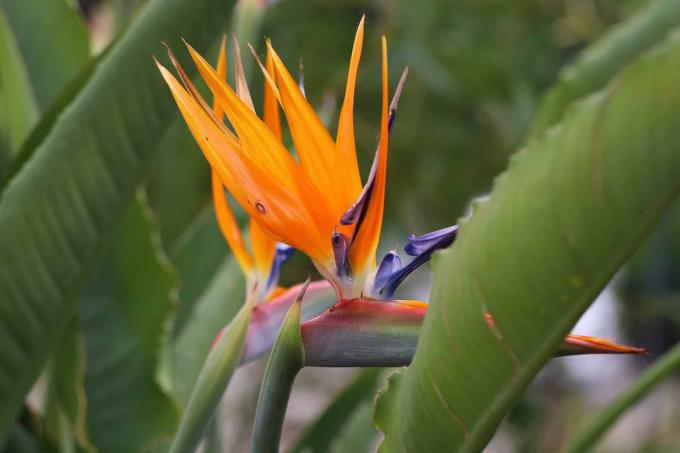
The flowers of Tree Strelitzia (Strelitzia nicolai) are reminiscent of colorful parrots. The plants are easy to care for and only need a good supply of water on very warm days.
- growth habit: shrubby, upright, spreading
- Height: 200 – 500 cm
- growth rate: 5 – 10 cm per year
- Sheet: pointed to oval, in fronds, evergreen
- blossom: sword-like, mostly multicolored
- substrate: sandy to loamy, tolerant of lime, nutritious, humic
eucalyptus
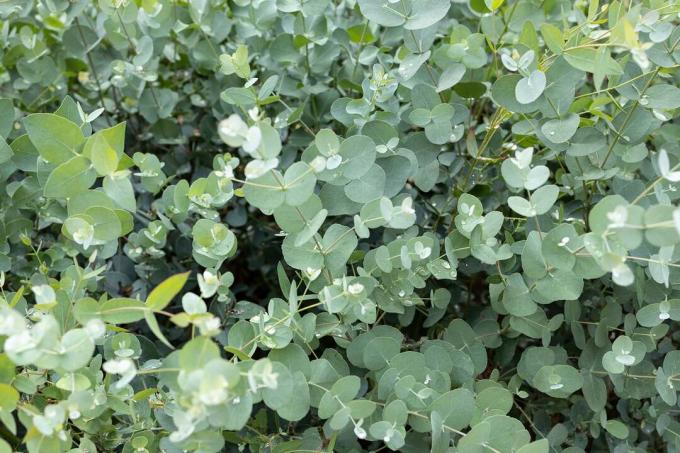
eucalyptus (Eucalyptus) comes from warm regions, but tolerates low temperatures. The most common species available in Central Europe is the cider gum (Eucalyptus gunnii).
- growth habit: shrubby, small tree
- Height: 200 – 500 cm
- growth rate: 30 – 50 cm per year
- Sheet: rounded to lanceolate, silvery to bluish, occasionally also green, evergreen, leaves smell typically of eucalyptus
- blossom: spherical, white, inconspicuous
- substrate: loamy, fresh to moist
Cape Leadwort
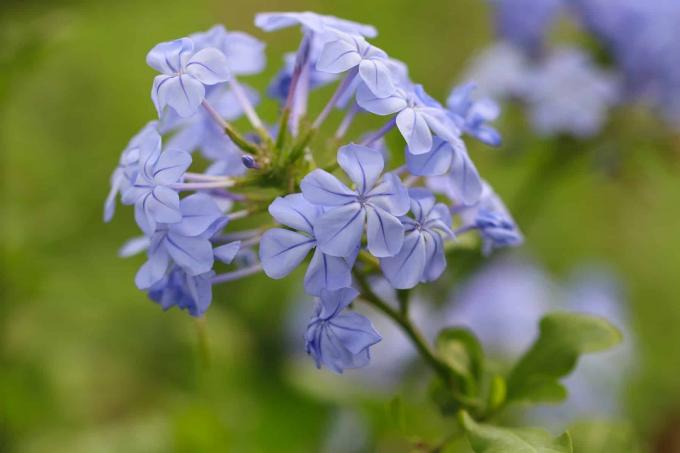
The Cape leadwort (Plumbago auriculata) absolutely needs a climbing aid, but can be guided through the entire conservatory with it. From May until September it forms small flowers again and again.
- growth habit: climbing, overhanging
- Height: 100-200cm
- growth rate: 10 – 30 cm per year
- Sheet: oblong, medium green, evergreen
- blossom: grape-like, blue
- substrate: slightly dry to fresh, nutritious, humic, sandy to loamy
night jasmine
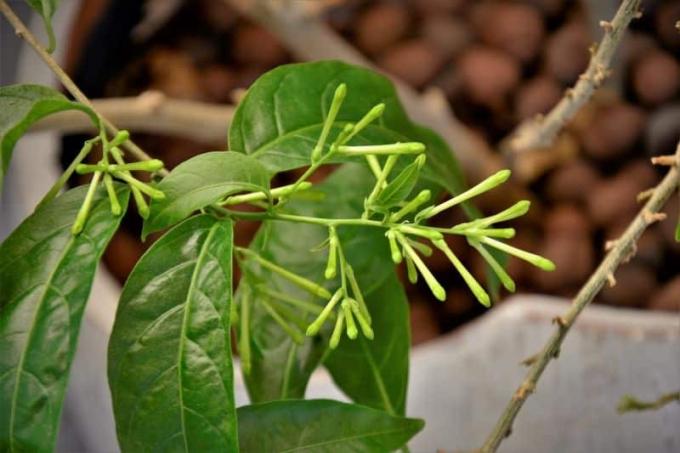
The night jasmine (Cestrum nocturnum) originally comes from the Canary Islands. The flowers are rather small and inconspicuous, but they exude a beguiling scent, especially in the evening hours.
- Growth form: bushy, upright
- Height: 300 – 500 cm
- growth rate: 20 – 30 cm per year
- Sheet: elongate, tapering, evergreen
- blossom: green-white to yellowish, tubular, gathered in clusters
- substrateType: slightly moist, sandy to loamy, nutritious
Ylang Ylang
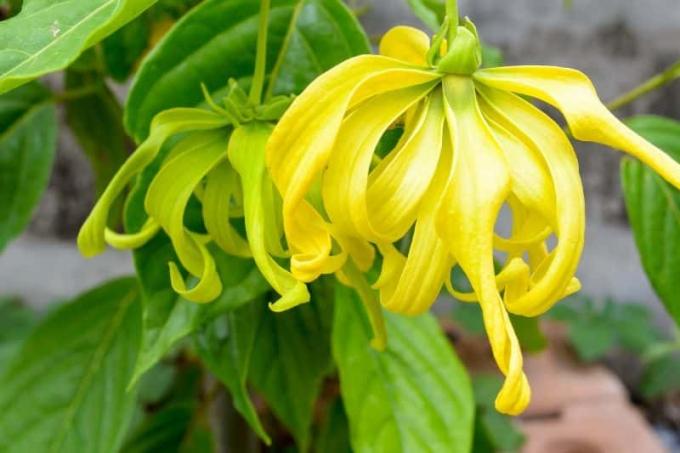
Ylang-ylang (Cananga odorata) is known to many as an aromatic fragrance. The climbing plant not only impresses with its growth, but also with its unusual flower shape.
- growth habit: climbing
- Height: 1250 – 350 cm
- growth rate: 30 – 50 cm per year
- Sheet: oval, crenate, evergreen
- blossom: green-yellow, umbellate, conspicuously long, lanceolate bracts, up to 8 cm long
- substrate: loose, permeable, rich in nutrients
frequently asked Questions
Yes, an outdoor location in summer is possible. However, the plants should be gradually accustomed to the UV radiation so that the leaves are not damaged. By September at the latest, the plants should be brought back into the conservatory so that they can get used to the location again.
With fast-growing plant species, you should change the substrate every year. With frugal plants like agaves, it is sufficient to repot them every two to three years.
Yes, but you should make sure that you combine plants with similar water or fertilizer requirements. Combinations can look very attractive, but have the disadvantage that they are more difficult to repot because the roots are often intertwined.
